Yangtze finless porpoises under well protection with improved ecological environment

Yangtze finless porpoise Tao Tao swims at the Baiji Dolphin House under the Institute of Hydrobiology, the Chinese Academy of Sciences (CAS) in Wuhan, central China's Hubei Province, July 5, 2023. (Xinhua/Xiao Yijiu)
Three generations of researchers at the Institute of Hydrobiology, the Chinese Academy of Sciences (CAS) have spent decades rescuing and nursing endangered species - the Baiji dolphin and the Yangtze finless porpoise. The latter is dubbed the "smiling angel of the Yangtze River" as its slightly curly lips resemble those of a smiling person.
Baiji dolphin Qi Qi passed away in July 2002 after living for more than 22 years at the Baiji Dolphin House under CAS Institute of Hydrobiology in Wuhan. There was no more Baiji dolphin at the house after Qi Qi's death, but the house and the Wuhan Baiji Conservation Foundation kept their names unchanged. Researchers there decided to apply protective measures designed for Baiji dolphins to their "cousins" - Yangtze finless porpoises.
Eleven Yangtze finless porpoises are now raised at the Baiji Dolphin House, four of which were bred in artificial environments. China has also established a number of in-situ and ex-situ reserves for these aquatic mammals, and the finless porpoises living there, about 150 in total, are capable of natural reproduction.
On April 25, 2023, four Yangtze finless porpoises ex-situ protected at the Yangtze River Swan Island Baiji Dolphin National Nature Reserve were released in batches into the Xinluo and Shishou sections along the main stream of Yangtze River, which successfully completed the last key link in the closed loop of protection technology system for Yangtze finless porpoises.
Data from the Yangtze Finless Porpoise Expedition 2022 across the whole Yangtze River basin showed their population had reached 1,249, a historic "rebound."
Hao Yujiang, an associate researcher at the CAS Institute of Hydrobiology, served as the group leader for Yichang-Chenglingji section during the expedition in 2022. "We could see more green along the Yangtze River, the river bank looked more natural, and there were more fish in the water," he said, adding, "We are also more optimistic that these 'smiling angels' would have a better future."
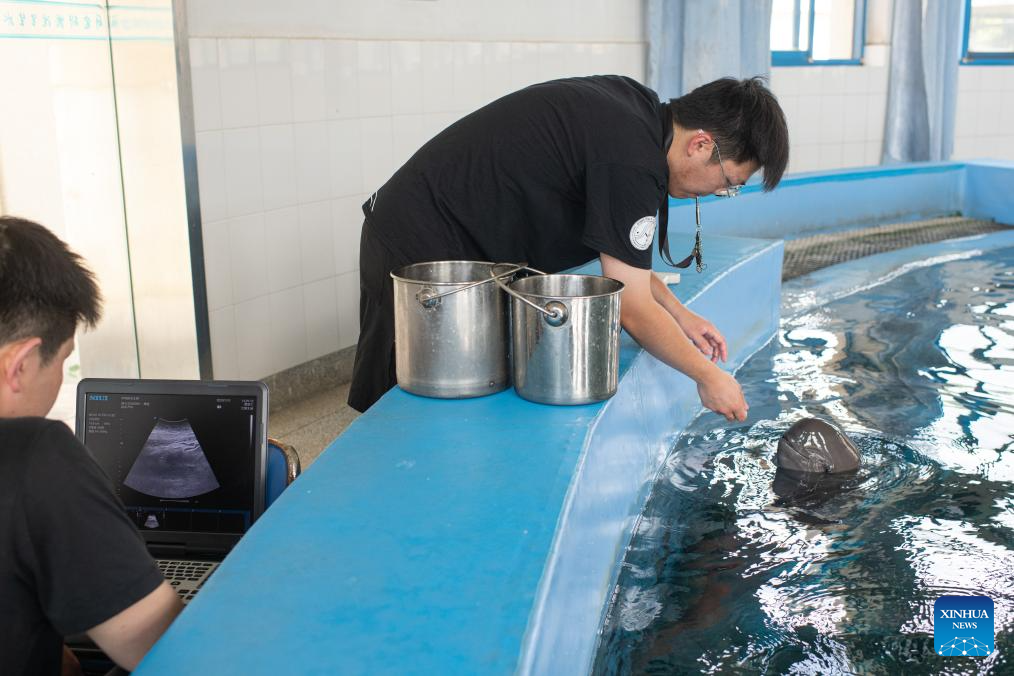
Tang Bin (L) and Feng Yuanze, members of the cetacean conservation biology group under the Institute of Hydrobiology, the Chinese Academy of Sciences (CAS), give a B-ultrasound examination to Yangtze finless porpoise Fu Jiu at the Baiji Dolphin House under the CAS Institute of Hydrobiology in Wuhan, central China's Hubei Province, July 12, 2023. (Xinhua/Xiao Yijiu)
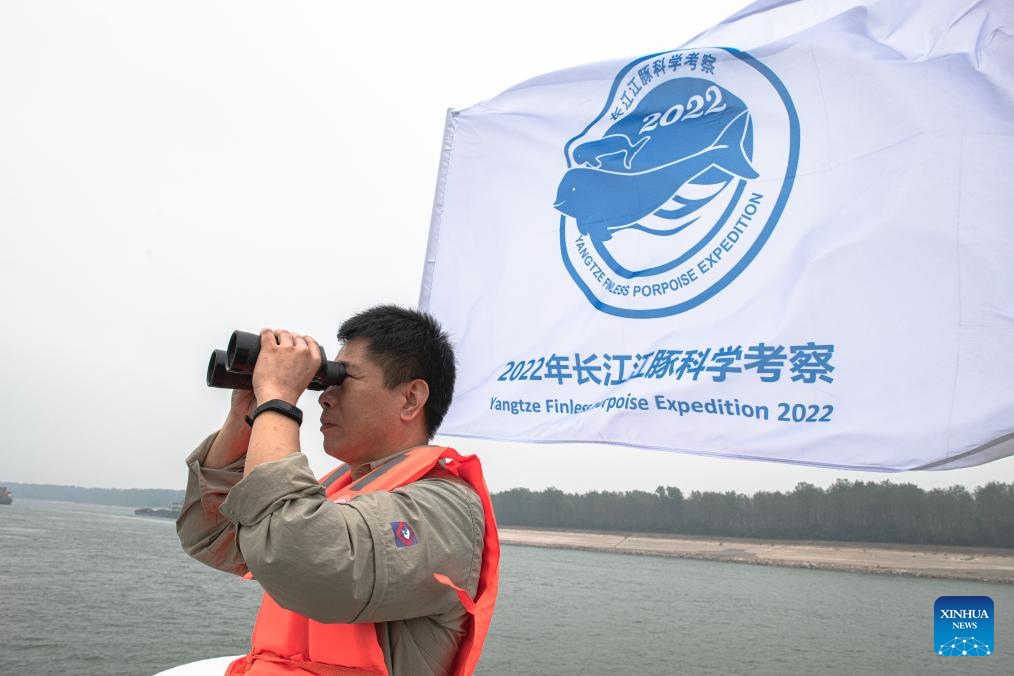
Hao Yujiang, an associate researcher of the the Institute of Hydrobiology, the Chinese Academy of Sciences (CAS), conducts an observation of the Yangtze finless porpoise at the Shishou section of Yangtze River in central China's Hubei Province, Sept 23, 2022. (Xinhua/Xiao Yijiu)

This aerial photo taken on May 11, 2021 shows three Yangtze finless porpoises swimming in the section of Yangtze River in Yichang, central China's Hubei Province. (Xinhua/Xiao Yijiu)
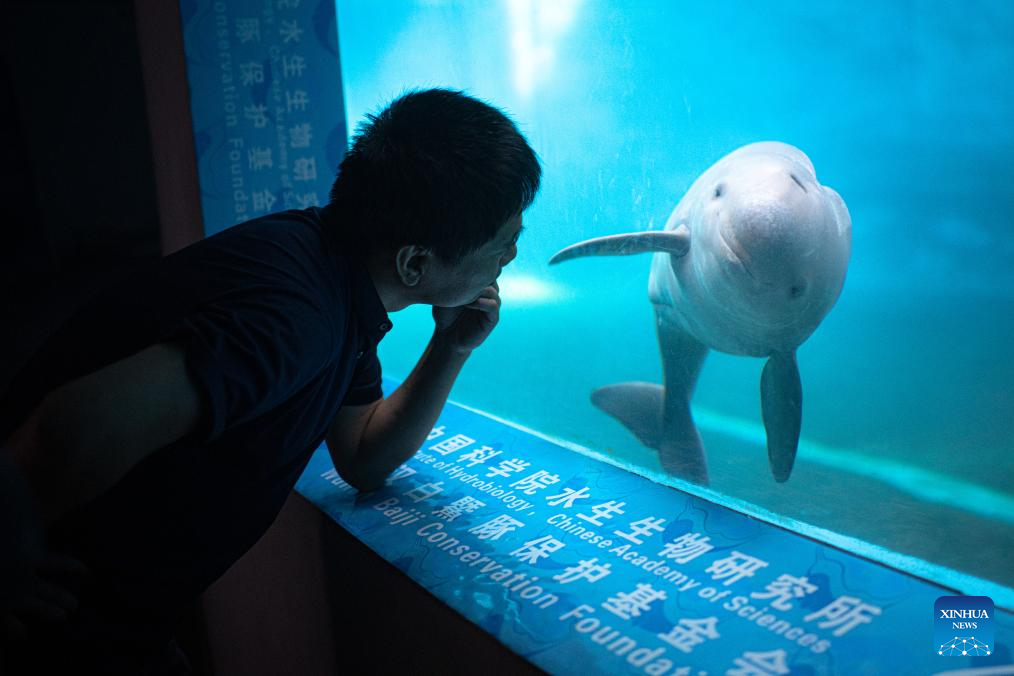
Hao Yujiang, an associate researcher of the the Institute of Hydrobiology, the Chinese Academy of Sciences (CAS), observes a Yangtze finless porpoise at the Baiji Dolphin House under his institute in Wuhan, central China's Hubei Province, on July 12, 2023. (Xinhua/Wang Yijie)

Staff members carry out observation work during the Yangtze Finless Porpoise Expedition 2022 in the Shishou section of Yangtze River, central China's Hubei Province, Sept. 23, 2022. (Xinhua/Xiao Yijiu)
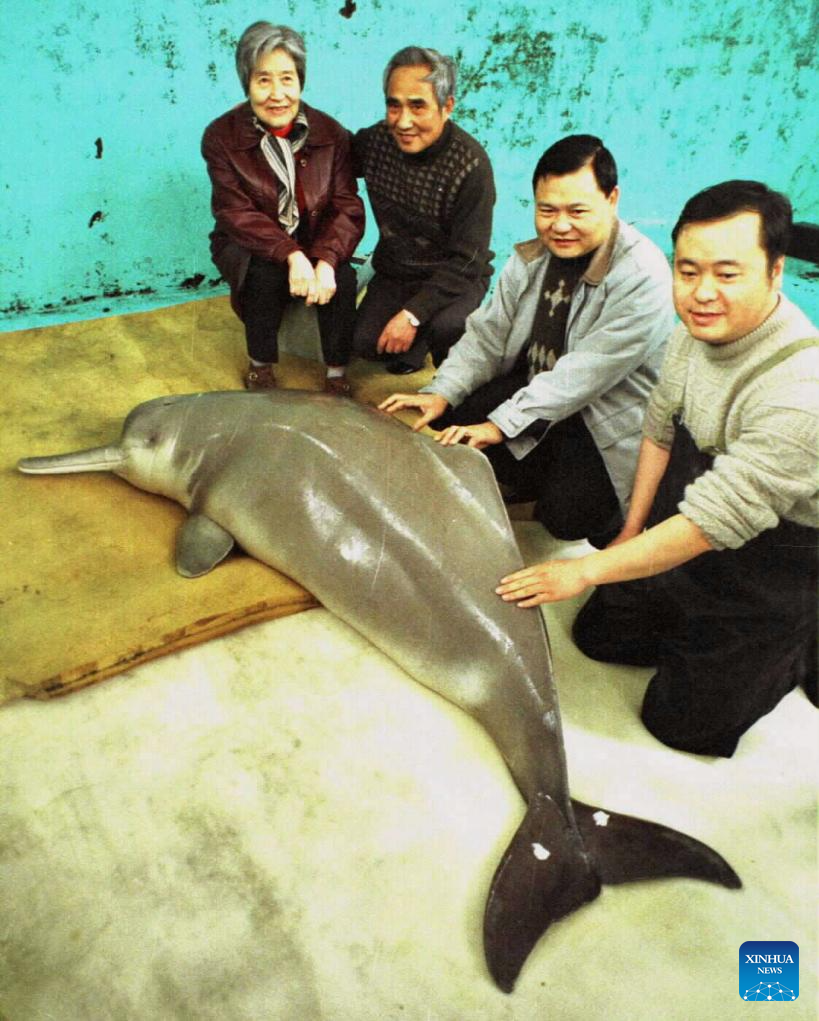
This undated file photo shows researchers Chen Peixun, Liu Renjun, Wang Ding and Zhang Xianfeng (L to R), who were involved in the captive breeding, conservation and research of Baiji dolphin, and the Baiji dolphin they were taking care of. (Xinhua/Cheng Min)
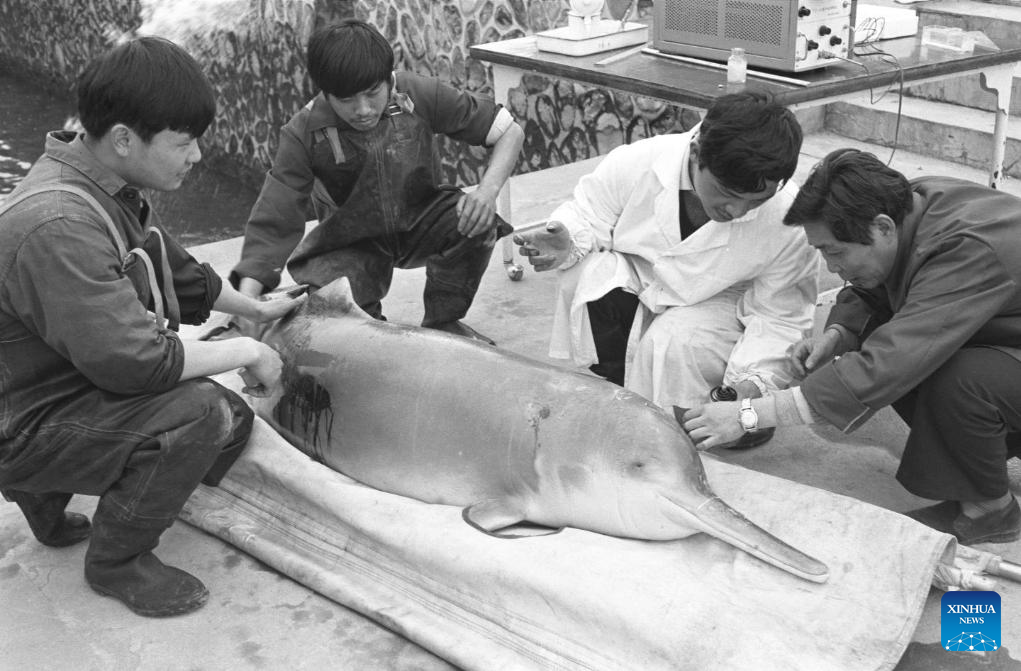
This file photo taken in the 1980s shows researchers of the Baiji dolphin research group under the Institute of Hydrobiology, the Chinese Academy of Sciences examining Baiji dolphin Qi Qi. (Xinhua/Yu Chengjian)
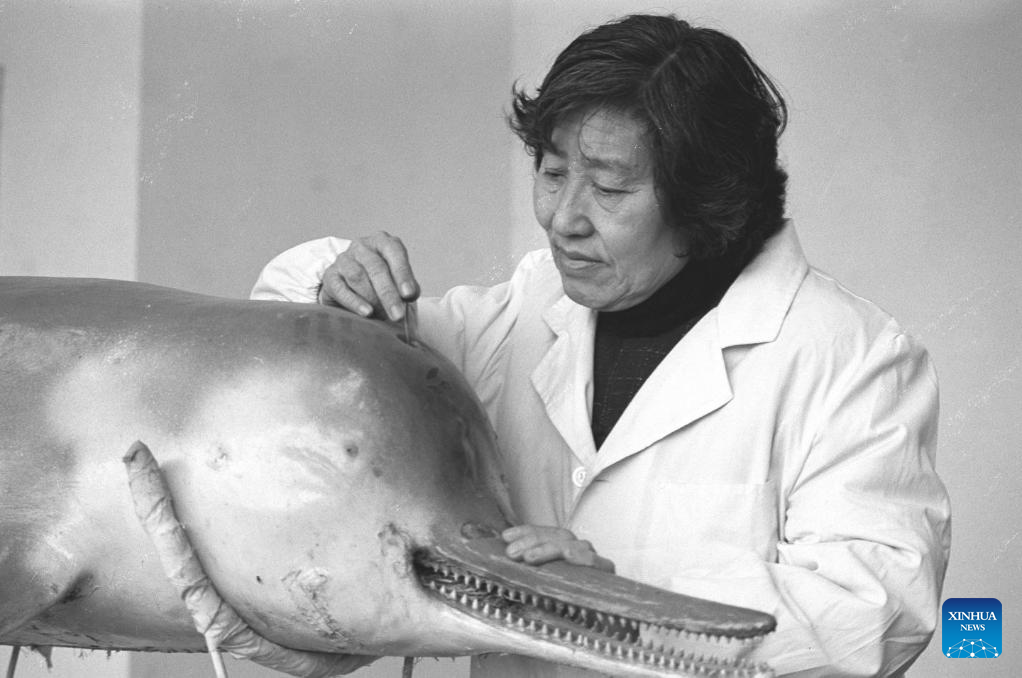
This file photo taken in the 1980s shows Chen Peixun, a researcher of the Institute of Hydrobiology, the Chinese Academy of Sciences at work. (Xinhua/Yu Chengjian)

He Junyi, a science popularization lecturer, gives a lecture on Yangtze finless porpoise protection at the Hankou marshland by the Yangtze River in Wuhan, central China's Hubei Province, June 28, 2023. (Xinhua/Xiao Yijiu)
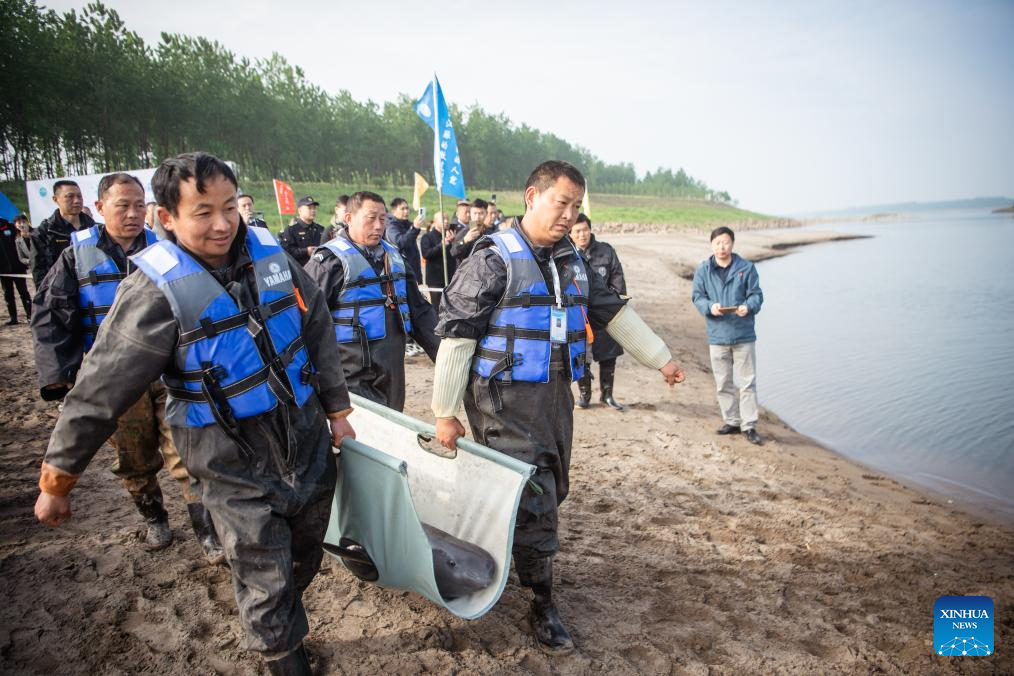
Staff members transfer a Yangtze porpoise to a section of Yangtze River and release it there in central China's Hubei Province, on April 25, 2023. (Xinhua/Wu Zhizun)
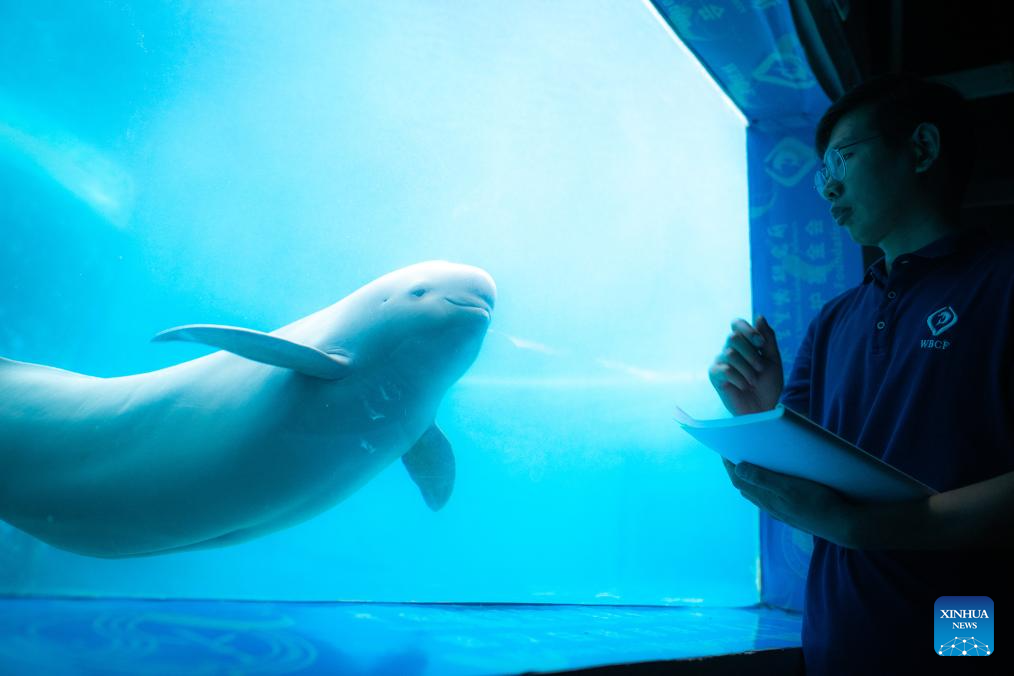
Trainer Deng Zhengyu observes a Yangtze finless porpoise at the Baiji Dolphin House under the Institute of Hydrobiology, the Chinese Academy of Sciences in Wuhan, central China's Hubei Province, on July 5, 2023. (Xinhua/Xiao Yijiu)
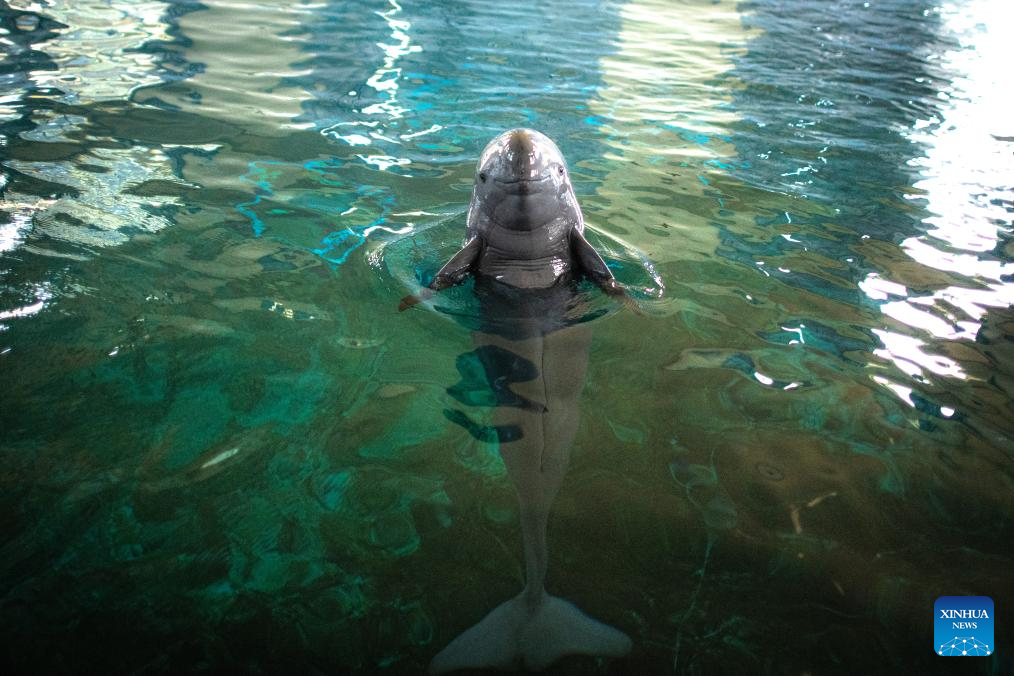
Yangtze finless porpoise Tao Tao swims at the Baiji Dolphin House under the Institute of Hydrobiology, the Chinese Academy of Sciences (CAS) in Wuhan, central China's Hubei Province, July 5, 2023. (Xinhua/Xiao Yijiu)

A trainer feeds baby finless porpoise F9C22 at the Baiji Dolphin House under the Institute of Hydrobiology, the Chinese Academy of Sciences in Wuhan, central China's Hubei Province, July 5, 2023. (Xinhua/Xiao Yijiu)

Trainer Wang Chaoqun feeds a Yangtze finless porpoise at the Baiji Dolphin House under the Institute of Hydrobiology, the Chinese Academy of Sciences in Wuhan, central China's Hubei Province, July 12, 2023. (Xinhua/Jin Liwang)
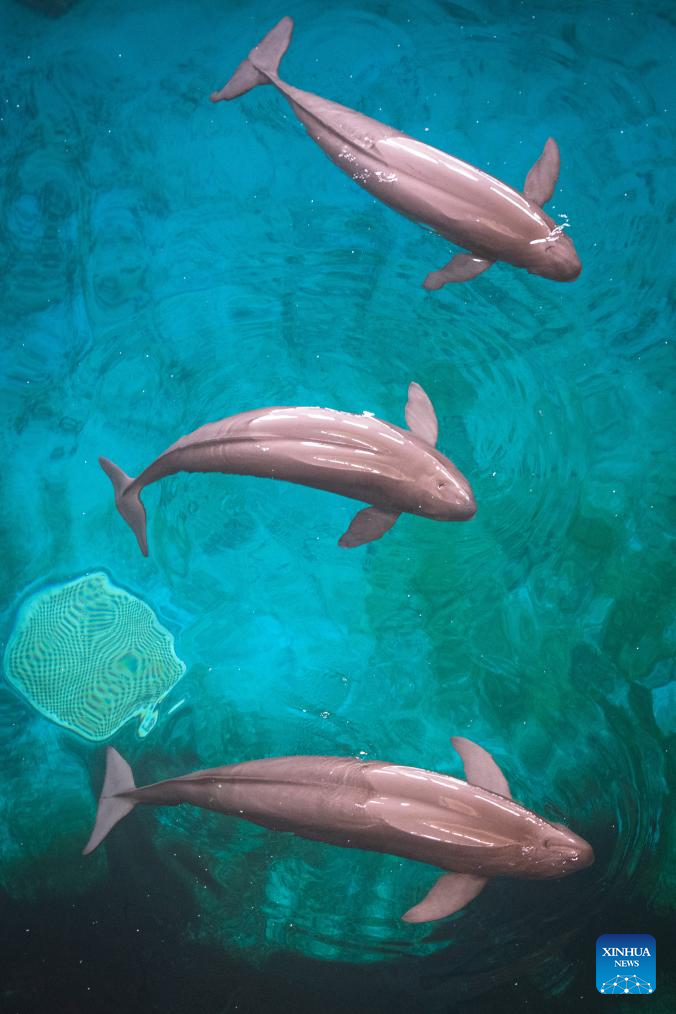
Three Yangtze finless porpoises swim at the Baiji Dolphin House under the Institute of Hydrobiology, the Chinese Academy of Sciences (CAS) in Wuhan, central China's Hubei Province, June 29, 2023. (Xinhua/Xiao Yijiu)
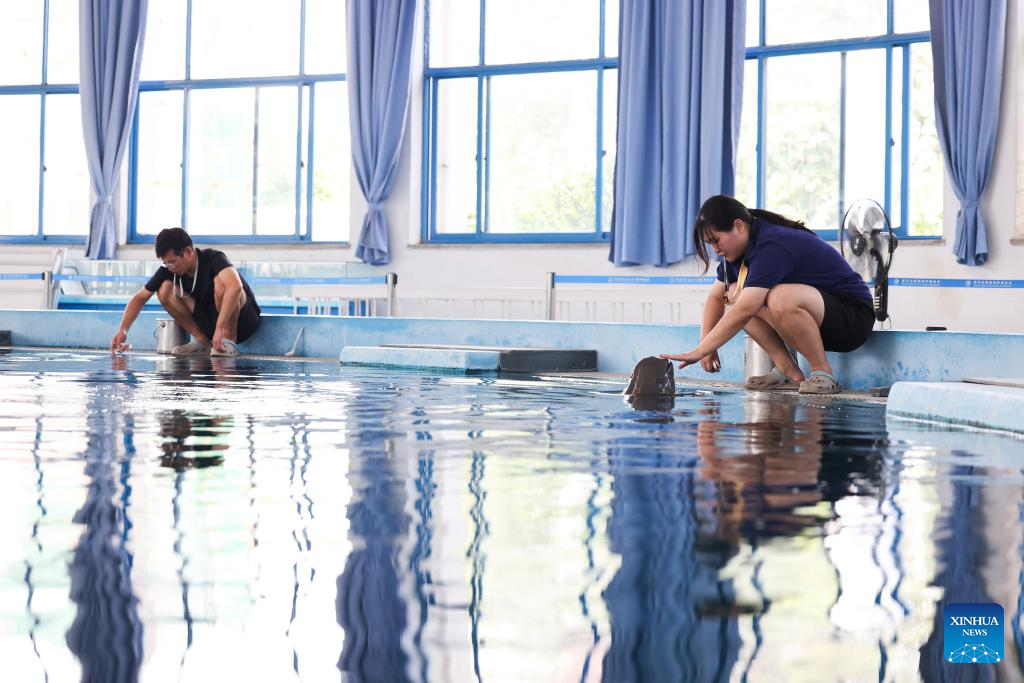
Trainers feed Yangtze finless porpoises at the Baiji Dolphin House under the Institute of Hydrobiology, the Chinese Academy of Sciences in Wuhan, central China's Hubei Province, July 12, 2023. (Xinhua/Jin Liwang)
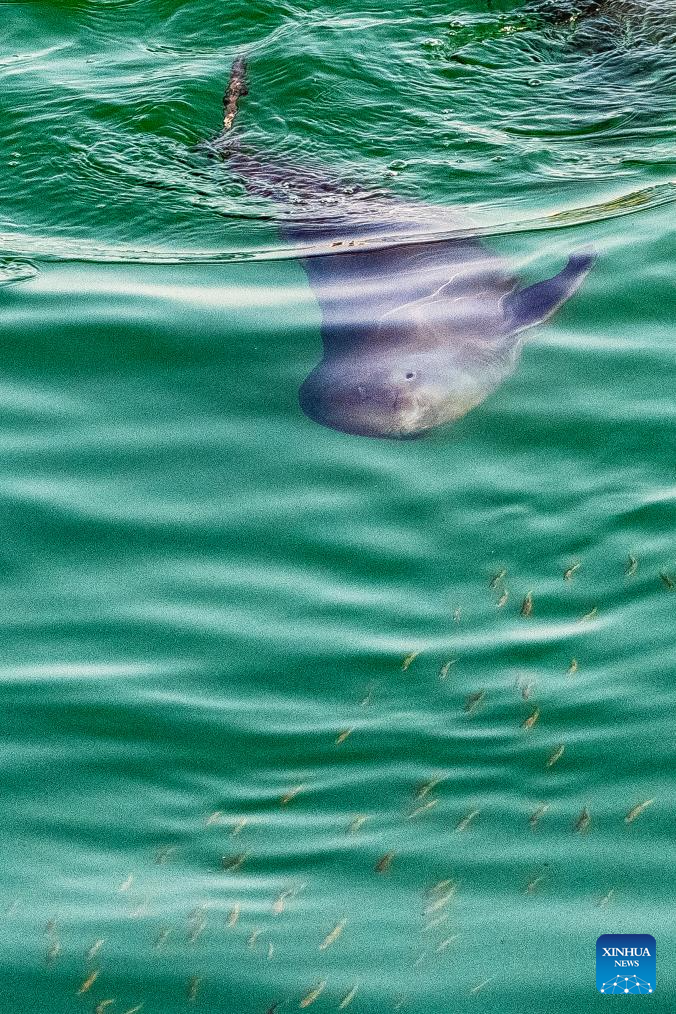
A Yangtze finless porpoise hunts for food in the section of Yangtze River in Yichang City, central China's Hubei Province, Feb. 19, 2023. (Xinhua/Xiao Yijiu)
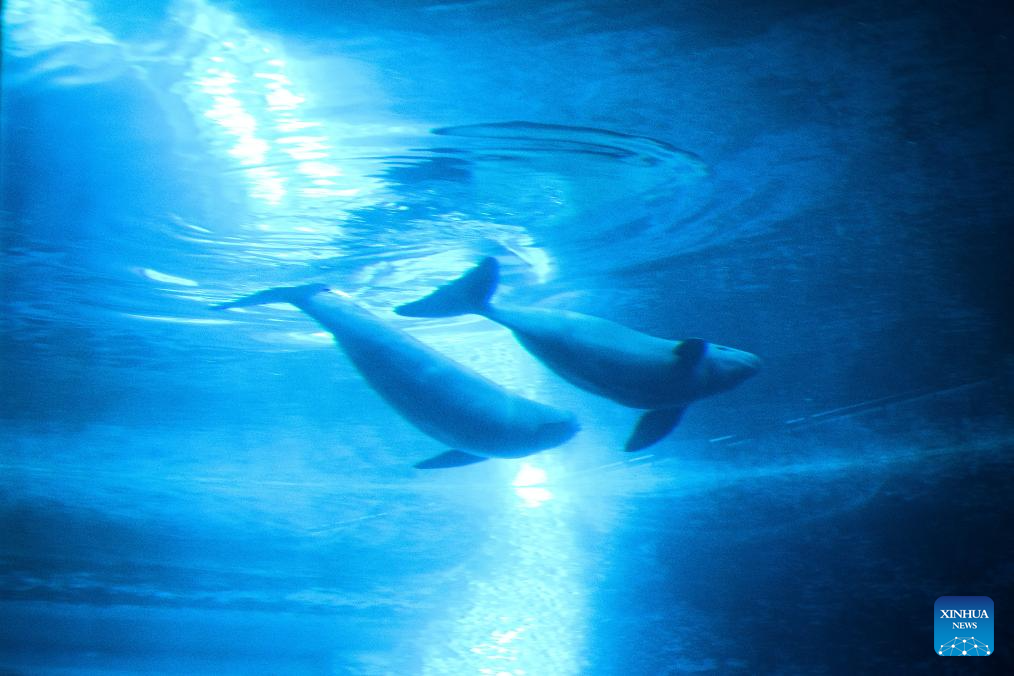
Two Yangtze finless porpoises swim at the Baiji Dolphin House under the Institute of Hydrobiology, the Chinese Academy of Sciences (CAS) in Wuhan, central China's Hubei Province, on July 12, 2023. (Xinhua/Xiao Yijiu)
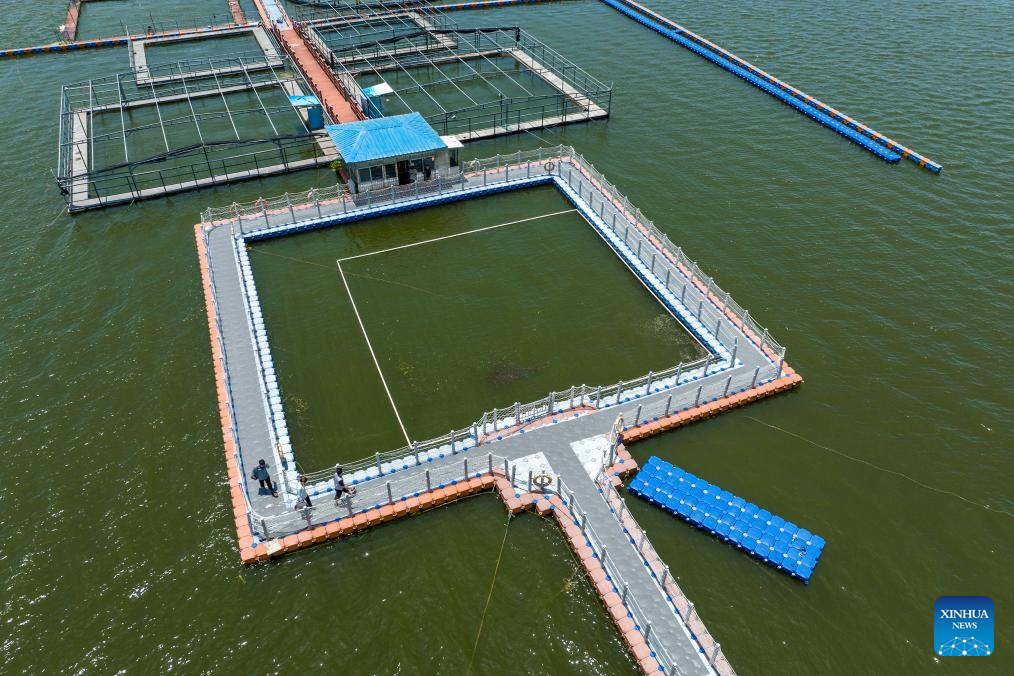
This aerial photo taken on June 27, 2023 shows staff members of the Institute of Hydrobiology, the Chinese Academy of Sciences working at the Yangtze River Swan Island Baiji Dolphin National Nature Reserve, central China's Hubei Province. (Xinhua/Wu Zhizun)
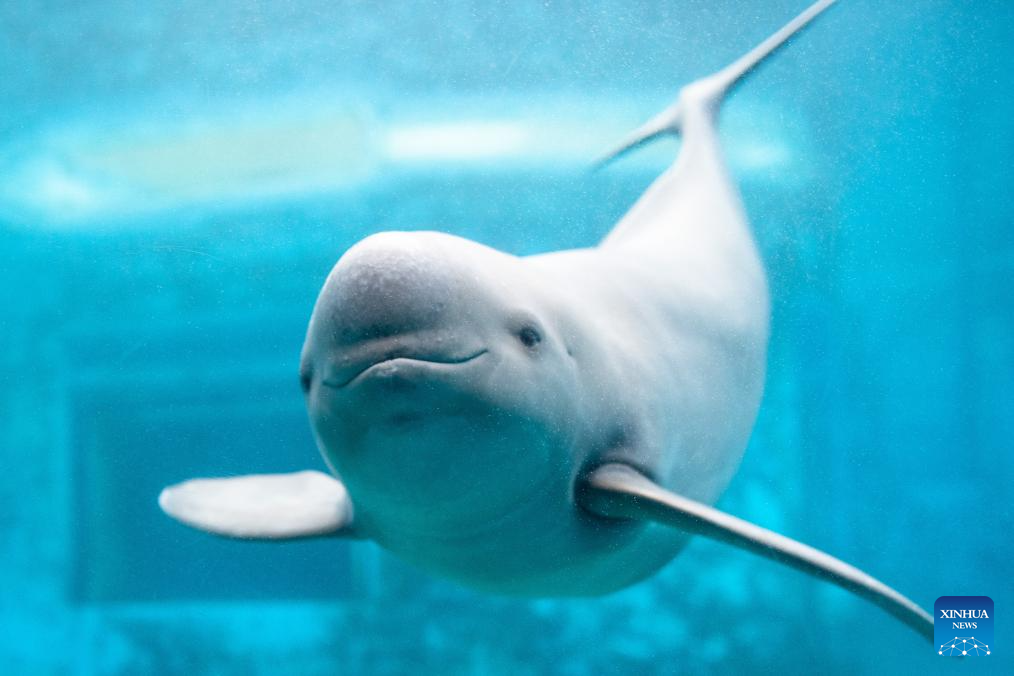
A Yangtze finless porpoise swims at the Baiji Dolphin House under the Institute of Hydrobiology, the Chinese Academy of Sciences (CAS) in Wuhan, central China's Hubei Province, on July 5, 2023. (Xinhua/Xiao Yijiu)

Staff members from the Institute of Hydrobiology, the Chinese Academy of Sciences monitor the Yangtze finless porpoises growing in a cage at the Yangtze River Swan Island Baiji Dolphin National Nature Reserve, central China's Hubei Province, June 27, 2023. (Xinhua/Wu Zhizun)
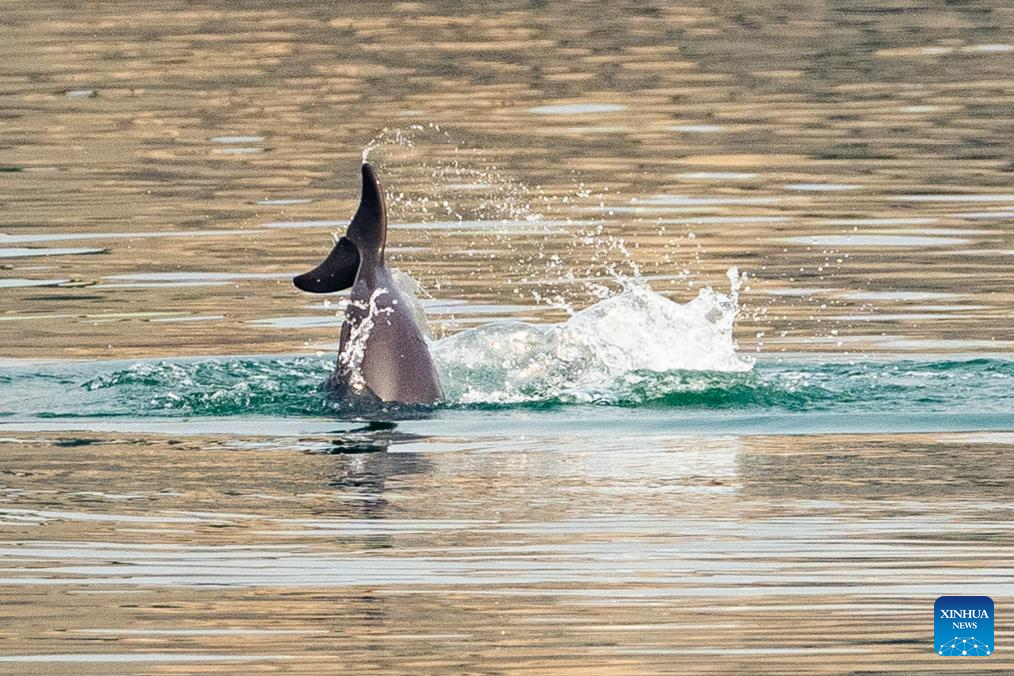
A Yangtze finless porpoise swims in the section of Yangtze River in Yichang City, central China's Hubei Province, Feb. 27, 2023. (Xinhua/Xiao Yijiu)

Staff members transfer Yangtze porpoises to a section of Yangtze River and release them there in central China's Hubei Province, on April 25, 2023. (Xinhua/Wu Zhizun)
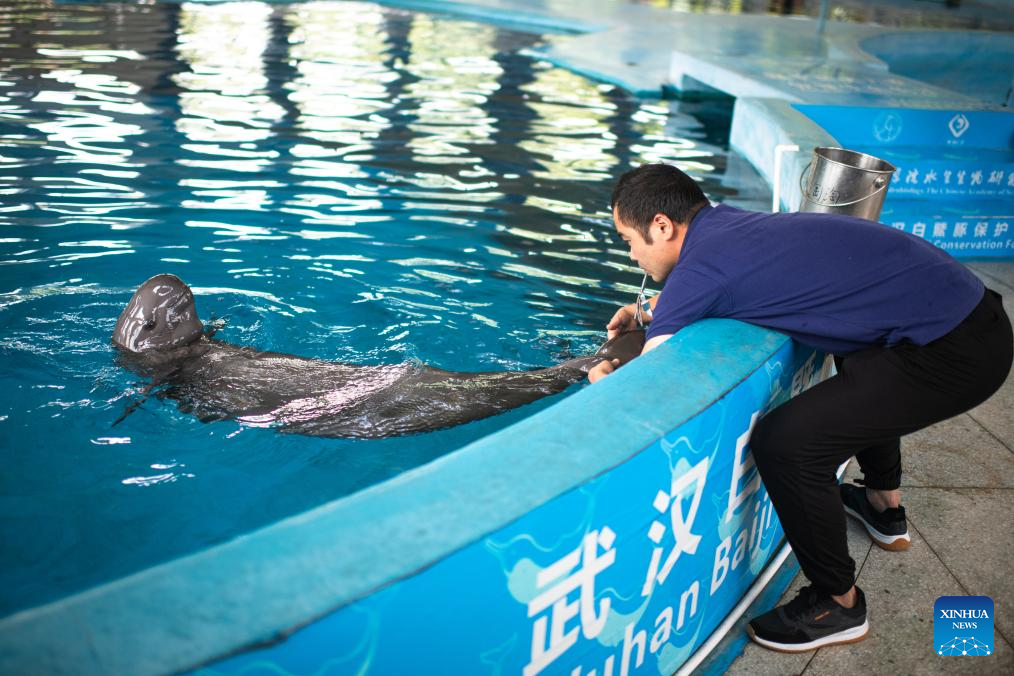
Trainer Wang Chaoqun trains a Yangtze finless porpoise at the Baiji Dolphin House under the Institute of Hydrobiology, the Chinese Academy of Sciences in Wuhan, central China's Hubei Province, July 12, 2023. (Xinhua/Wang Yijie)
Photos
Related Stories
- Wildlife in Altun Mountains in NW China's Xinjiang
- In pics: wild animals in Altun Mountains National Nature Reserve, NW China's Xinjiang
- Animals seen in Gaoligong Mountain National Nature Reserve in Yunnan
- China adds 700 species to terrestrial wildlife protection list
- Ranger helps brown bear cubs reunite with mother
Copyright © 2023 People's Daily Online. All Rights Reserved.









